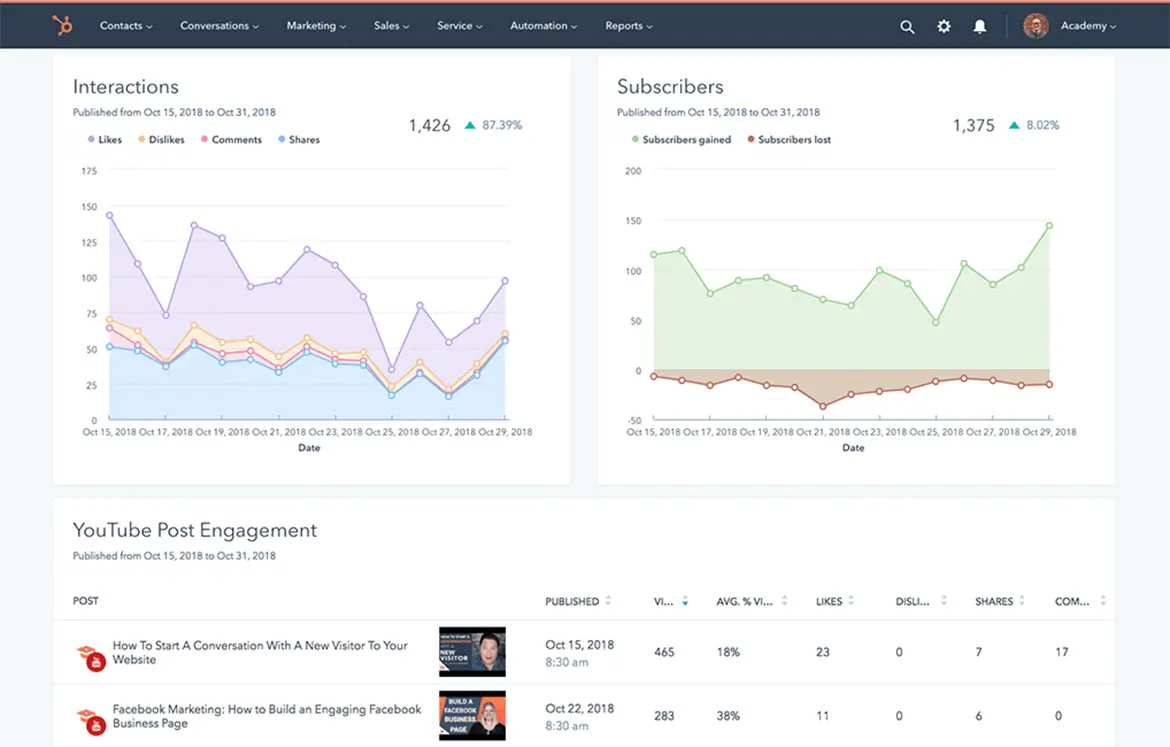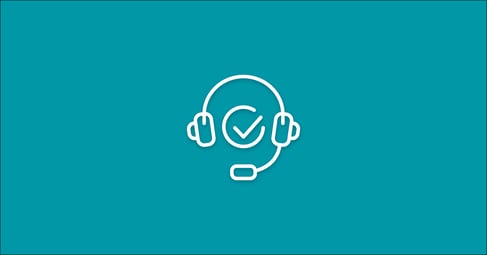
Written By:
Yor Madrio
In today's digital landscape, where social media has become an essential platform for communication and engagement, organizations across various sectors are leveraging its power to connect with their audiences.
In fact, a study conducted by HubSpot showed that businesses that posted more than 16 times a month on a social media platform generated 3.5 times more traffic than businesses that published less than 4 posts. Therefore, creating a calendar can ensure a cadence and consistency that can greatly impact students' engagement with your school.
If consistent social media content for your institution is something you struggle with, here’s an overview of what a social media calendar is and what you need to include to create an effective one.
What Is a Social Media Calendar?
A social media calendar is a strategic tool to plan and schedule social media content in advance. By creating a comprehensive social media calendar, you can better organize and manage your social media presence by providing guidelines for content creation, curation, and publishing.
Some additional benefits your school’s social media team can experience when leveraging this tool include:
- Content Organization: Enables you to plan your content in advance by determining what type of content to create, when to publish it, and on which platforms
- Content Consistency: Builds a strong social media presence by ensuring a regular posting schedule that maintains a steady stream of content for your audience
- Strategic Alignment: Allows you to align your social media efforts with your broader marketing goals and objectives to map out content that supports specific campaigns, promotions, or events
- Collaboration and Coordination: Serves as a centralized tool for collaboration that helps everyone involved to understand the content schedule, contribute ideas, provide feedback, and ensure smooth coordination
As a result, a social media content calendar enables you to deliver cohesive and impactful content that resonates with prospective students and their families, strengthen your institution's brand, and help you achieve your overall enrollment goals.
How to Create an Effective Social Media Calendar
While creating a social media calendar for your school may seem simple, it does require careful planning and consideration. For example, your first step should be to establish your goals; whether it's increasing brand awareness, attracting prospective students, engaging current students, and/or promoting campus events. Clearly defining these objectives is crucial in guiding your content strategy.
However, once you’ve identified your main goals you’ll be better prepared to attack the following steps to creating a highly effective social media calendar that delivers that value your school needs.
1. Create your Foundation
The key to any effective content calendar is recording and tracking as much data as possible for each post. For example, here are some data points you should consider recording:
- Topic: The subjects or themes covered in the content (e.g., campus events, program highlights, student success stories).
- Campaign Name: A unique, consistent name for groups of content to effectively track and attribute them to specific initiatives or goals.
- Journey Stage: The stage of the student journey you're targeting with each piece of content, tailoring it to either attract prospective students, assist current students, or engage alumni.
- Persona: The intended audience for your content. The options listed should map to student personas that have been documented in detail.
- Call-to-Action: A clear and compelling call-to-action, prompting readers to take a desired next step (e.g., applying for admission, scheduling a campus visit, or exploring academic programs).
- Publish Date: The optimal publishing date for each post considering the content’s reach and target audience for maximum engagement.
2. Pick Your Distribution Channels
Choosing a social media platform(s) that aligns with your target audience and goals is an essential element that needs to be included in your social media calendar. To ensure you’re making informed decisions on this topic, consider researching which platforms are popular among students and where they actively engage, rather than ones you’re most familiar with.
Performing a current content audit can also be incredibly useful in the creation of a social media calendar. By evaluating your current social media presence and its performance, you can identify gaps and determine possible areas for improvement, including new social platforms. Lastly, when creating your social media calendar, include a mix of content types that resonate with your audience such as:
- Campus news
- Student testimonials
- Event promotions
- Educational resources
- Engaging visuals
To make these niche posts even more effective, consider aligning this content with important school dates, impressive academic milestones, and student-oriented themes. By following these steps, you can develop an effective social media calendar that enhances your institution's online presence and engages your target student and their families.
If you’d like to learn more about developing a social media strategy for your school, consider reading our blog post “How to Develop a Social Media Strategy in Higher Education”
3. Determine How Often To Post
Posting frequency plays a crucial role in maximizing the effectiveness of your social media strategy. Each social media platform has its own algorithm that determines how your posts are ranked and displayed to users. While the algorithms consider factors like recency, interaction, and relevance, consistent posting over extended periods tends to yield more significant benefits compared to sporadic bursts of high-volume posting.
When it comes to determining your posting schedule for your social media calendar, it's important to consider the specific platform you're using. For example, here's a general overview of common posting frequency of some popular social platforms:
- Facebook: It’s generally recommended to post between 1 to 2 times a day on this platform to ensure a consistent presence without overwhelming your audience with excessive content.
- Twitter: This fast-paced platform’s typical posting cadence is between 1 to 5 times a day, allowing you to keep up with the platform's real-time nature while effectively engaging with your audience.
- Instagram: Since this social channel prioritizes high-quality visuals and curated content, posting between 3 to 7 times a week strikes a good balance between maintaining an active presence and ensuring the quality of your posts.
- LinkedIn: The professional networking platform’s posting frequency depends on your specific goals and target audience, but posting between 1 to 5 times a day can help you engage with professionals and showcase your industry expertise.
- TikTok: This short-clip video platform can be addicting to viewers, but posting between 1 to 4 times a day on TikTok can help you take advantage of the platform's algorithm without ignoring your reach among your community followers.
4. Think About Best Times To Post
Optimal posting times vary from platform to platform, but research shows that there are correlations in high levels of user engagement on social media platforms and the time of day. For example, here are the most, and least, active hours of the day for users on these popular social media platforms:
- Facebook: Tuesday from 8am to 2pm is optimal for this platform, but the worst day to post is Sunday.
- Instagram: Monday from 9pm to 12am typically experiences a high volume of users, but the worst days to post are Wednesday through Sunday.
- LinkedIn: The best times to post on LinkedIn are Tuesdays and Wednesdays from 10am to noon, but weekends seem to drive the least engagement.
- TikTok: The best times to post on TikTok are Tuesdays and Wednesdays from 2pm to 5pm, while Sunday has low levels of engagement.
- Twitter: The best times to post on Twitter are Tuesdays through Thursdays from 9am to 2pm, while Sundays are the worst.
5. Apply the Rule Of Thirds and 80/20
As you guide yourself through social media, it's essential to follow the rule of thirds. This guideline suggests dividing your content into three categories:
- Promotional
- Educational/Informative
- Engaging/Interactive
By incorporating this rule, you can maintain a balanced and effective social media presence for your school. For example, promotional content showcases your institution's programs, events, and accomplishments, giving prospective students a glimpse into what you offer. Educational/informative posts allow you to share valuable resources, tips, and insights that benefit both current and prospective students. Finally, the engaging/interactive content fosters connections, encourages student participation, and builds a sense of community.
Another important principle to keep in mind when creating your social media calendar is the 80/20 rule. This principle suggests that 80% of your content should be focused on providing value, education, and engagement to your audience, while the remaining 20% can be promotional in nature.
Applying this rule allows you to build trust, establish credibility, and nurture meaningful relationships with your prospective students and their family from the start to completion of their educational journeys. By prioritizing informative and engaging content (e.g., educational resources, student stories, and industry insights), you can create a valuable and engaging social media experience.
The promotional content can be used strategically to highlight your institution's unique offerings, upcoming events, and noteworthy achievements. By striking the right balance with the 80/20 rule, you can cultivate an authentic and trusted presence on social media, strengthening your brand and connection with both current and prospective students.
6. Leverage Templates and Online Tools
Google Sheets is perhaps one of the most popular solutions for a school’s social media calendar. Not only does it let you collaborate with other people in real-time, but any changes made to the calendar can be easily tracked through the version history or comments feature.
Other third-party software, such as Sprout Social, HootSuite, and Asana also provide a more streamlined experience when creating a content calendar, but we recommend using a software like HubSpot because it seamlessly integrates with other content marketing and digital marketing efforts such as blogs, social posts, email marketing campaigns, and more.
HubSpot’s all-in-one social media calendar not only makes the planning process of posting easy, but the tracking, measurement, and reporting of the posts make it easy to track the impact of social media in the enrollment pipeline as well!
Make Social Media Posting Easier
A well-crafted and maintained social media calendar is meant to act as a guiding compass for your school if you’re hoping to optimize your online social presence. By implementing an organized approach to content planning, tracking, and scheduling, your school can effectively engage with your students and foster meaningful relationships with them.
By following the steps outlined in this article, you’ll be well-equipped to navigate the ever-changing state of social media marketing. But if you’re still looking for additional support in these efforts, consider downloading our free editorial calendar template.








